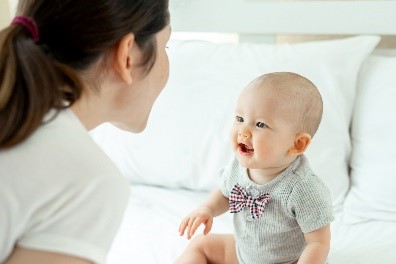
Image by jcomp on Freepik
Your baby should be learning speech from you, not the other way around – so ditch baby talk for parentese!
We all know that baby’s first attempts at words are often jumbled, kind of imprecise imitations of what they hear from the adults in the room. It’s not just that the words are new. Using their tongues and jaws and lips and adjusting breathing in the many combinations required to pronounce different sounds is a novel experience all by itself. That’s why babies and young children tend to miss some of the consonants as they attempt their first words – it’s not so hard to figure out how to make an “ah” sound but then to coordinate the mouth and tongue to follow that with a t? That’s the advanced class!
Similarly, it’s easier to get the hang of using more than one syllable for a word like bottle by repeating the first syllable than transitioning the entire vocal apparatus from what’s required for the first syllable to a whole new set-up required to produce the second or third – and so we get baba, not bottle. For a while, anyway.
But just because it’s tempting to mimic an infant’s first attempts at words doesn’t make that the best way to go. It’s much better for them and just as fun for you to use “parentese,” an exaggerated way of speaking to infants that captures their attention but still uses real words. Want to be a fluent parentese speaker? Here’s how.
Best practices in parentese include using:
- A higher pitch and sing-song intonation that get babies to focus on what you’re saying
- Face-to-face interaction with exaggerated facial expressions that will encourage your baby to connect mouth movements to the sounds they shape
- Stretched-out vowel sounds (“oooooo”) that will help them learn the sounds of your language
- Short sentences and word repetition that will help them learn words. If you need a little help keeping the words coming, try “sportscasting” – keeping a running commentary on what you and the baby are doing, where you are, and what you see – with a few pauses every now and then for a baby to react.
